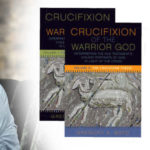We run our website the way we wished the whole internet worked: we provide high quality original content with no ads. We are funded solely by your direct support. Please consider supporting this project.

The Rule of Love
The traditional confession that Scriptura sacra sui ipsius interpres (“Sacred Scripture is its own interpreter”) presupposes that there is one divine mind behind Scripture, for example. Moreover, Church scholars have traditionally assumed that Scripture’s unity can be discerned in a variety of concepts, motifs, themes and theologies that weave Scripture together. And to speak specifically of the unity of the two testaments, scholars have traditionally held that this unity can be discerned by identifying particular types, anti-types, symbols, analogies, motifs, and even allegories that bridge them together.
I believe, however, that the most profound unity of Scripture is reflected in Augustine’s famous “rule of love,” alluded to in the previous chapter. According to Augustine, “[w]hoever… thinks that he understands the Holy Scriptures, or any part of them, but puts such an interpretation on them that does not tend to build up [the] twofold love of God and our neighbor, does not yet understand them as he ought.“ (Christian Doctrine, 1.26.40) So too, Augustine argued that,
Anything in the divine writings that cannot be referred either to good, honest morals, or to the truth of the faith, you must know is said allegorically….Those things…which appear to the inexperienced to be sinful, and which are ascribed to God, or to men whose holiness is put before us as an example, are wholly allegorical, and the hidden kernel of meaning they contain is to be picked out as food for the nourishment of charity. (Christian Doctrine, 3.10.12)
This rule reflects the conviction that the deepest unity of Scripture is love and that it was ultimately “breathed” for the purpose of love, which is why all Scriptural interpretation must be motivated by, consistent with, and result in love. Since God is love (1 Jn 4:8), it seems to me that it should be obvious that his “breathing” of Scripture is motivated by this love and expresses this love. And in this light, Augustine’s hermeneutical rule only makes sense.
The one shortcoming of this classical conviction is that “love” is a notoriously ambiguous term. Augustine famously (and, in terms of its historical effect, tragically) defined “love” as an inner disposition that had no necessary behavioral implications. This subjective definition allowed Christians throughout history to claim they were obeying Jesus’ command to love enemies even as they killed them—despite the fact that Jesus, Paul and John specifically teach that loving people necessarily includes acting in ways that benefit rather than harm enemies, and despite the fact that John specifically teaches that we cannot claim to love if we do not obey God’s commands (1 Jn 5:2-3; cf. 2 Jn 6).
For the same reason, this amorphous definition of love made it possible for Augustine and many who followed him to claim it was loving for God to consign the majority of humans to eternal flames before the creation of the world when he could have just as easily predestined them to heaven if he had wanted to. It strikes me that Augustine’s definition is sufficiently amorphous to allow for pretty much any cruel behavior imaginable—so long as one has a “loving” inner disposition.
Some have wisely given the hermeneutical rule of love a sharper focus and an even more solid anchoring in Scripture and the Church tradition by defining “love” Christocentrically. This is certainly warranted in as much as Jesus is the very embodiment of God’s love, to the point that Paul virtually equates “imitating (mimētēs) God” with living “a life of love, just as Christ loved us and gave himself up for us…” (Eph. 5:1-2, NIV). Not only this, but by giving Augustine’s rule a Christocentric focus, we bring it into complete conformity with the truth that Christ is the ultimate goal of Scripture. Putting the two together leads to the conclusion that all Scripture was ultimately “breathed” for the purpose of bearing witness to Christ-like love, which means that all Scriptural interpretation must be motivated by Christ-like love, must seek to discern Christ-like love in every passage of Scripture, and must result in an interpretation of Scripture that both reflects and further motivates Christ-like love.
I consider the Christocentric version of Augustine’s rule of love to be a monumentally significant improvement. And yet, I believe an even sharper understanding of the love that must define our Christocentric approach to Scripture is both possible and necessary. There is a thematic unity that joins together all the different facets of Christ’s identity, actions and teachings: it is the other-oriented, self-sacrificial love of God that received its quintessential expression on Calvary. Hence, if we want to embrace a hermeneutic that is centered on the love of God that was embodied in Christ, then I submit that we ought to embrace a hermeneutic that is even more specifically centered on the cross. In short, we ought to embrace a cruciform hermeneutic.
Image by Bob AuBuchon via Flickr.
Category: General
Tags: Augustine, Cross, Cruciform Theology, Jesus, Love, Rule of Love
Related Reading

Who Rules Governments? God or Satan? Part 1
Running throughout Scripture is the motif that depicts God as the ultimate ruler of the nations. On the other hand, the NT teaches that the ruler of nations is Satan. What do we do with these two apparently conflicting motifs? First, because OT authors tended to understand the creation along the lines of a king-centered…

The Cruciform Center Part 3: How Paul’s Epistles Reveal a Cruciform God
As we’ve discussed, the four Gospels point to a cruciform revelation of God (click here and here for a review), but what about the most widely read writer of the New Testament? What did the Apostle Paul have to say about how the cross reveals who God is? Before turning to Paul’s writings, I’d like…

Podcast: What is Crucifixion of the Warrior God?
In this 100th episode Greg gives us a peek at Crucifixion of the Warrior God. Pre-order your copy of the book here: The Crucifixion of the Warrior God: Volumes 1 & 2 (Fortress Press, 2017) http://traffic.libsyn.com/askgregboyd/Episode_0100.mp3

Knowing the Eternal God
If all our knowledge about God is to be oriented around the cross, as I argue in many places (see this post for instance), what does this mean for how we reflect on God’s transcendence? In other words, how can we speak of God’s eternal being since there obviously was no cross within God prior…

Why Did It Take SO Long for God to Reveal Himself in Jesus?
Greg talks about why it took God so long to reveal himself in Jesus. http://traffic.libsyn.com/askgregboyd/Episode_0048b.mp3

Answering an Objection to a Cross-Centered Approach to Scripture
Through Greg’s Facebook and Twitter, we’ve been getting some great feedback and questions regarding his cross-centered approach to Scripture. Several have voiced questions similar to the reader’s (below), so we thought it would be helpful to post Greg’s answer here on his blog.
